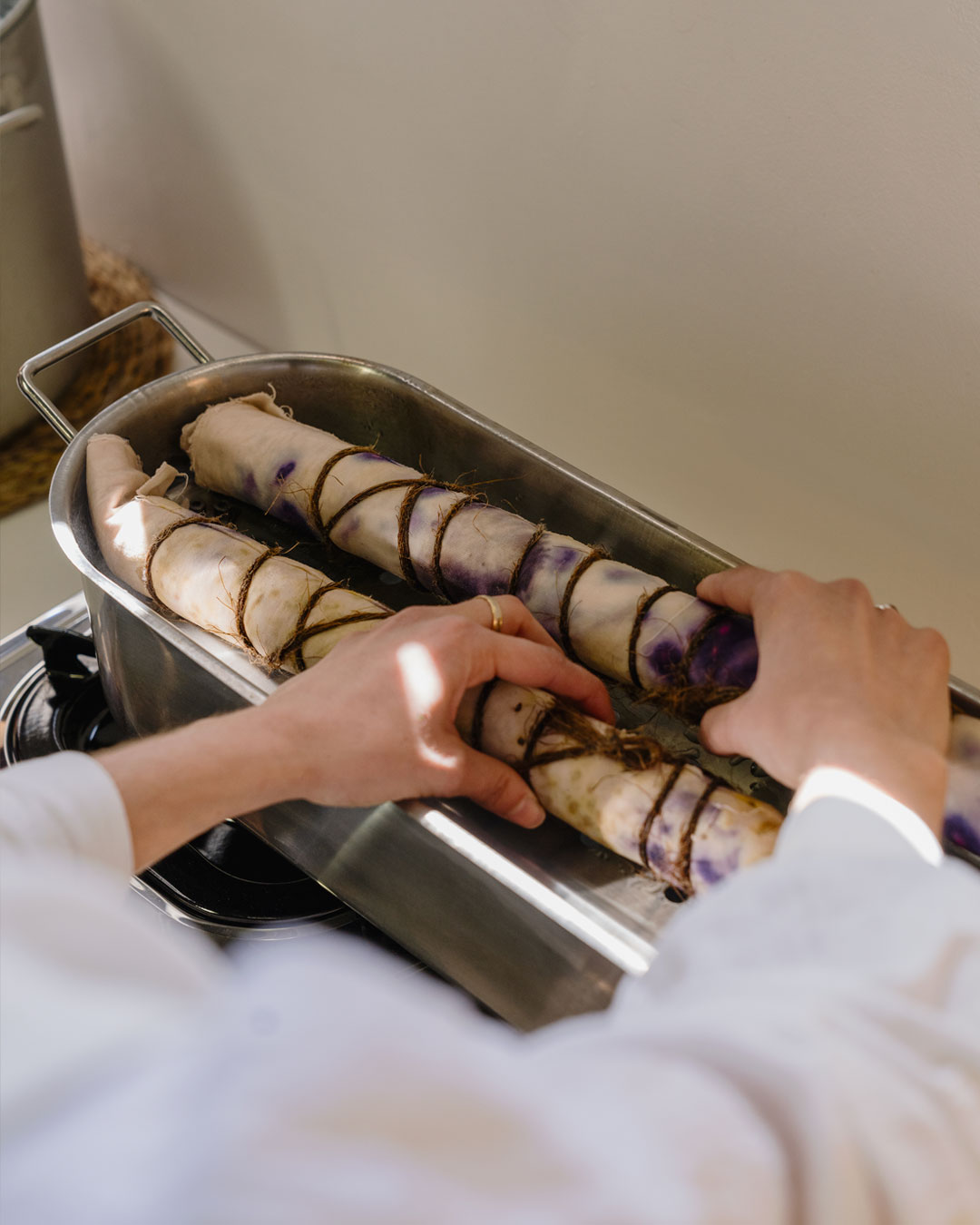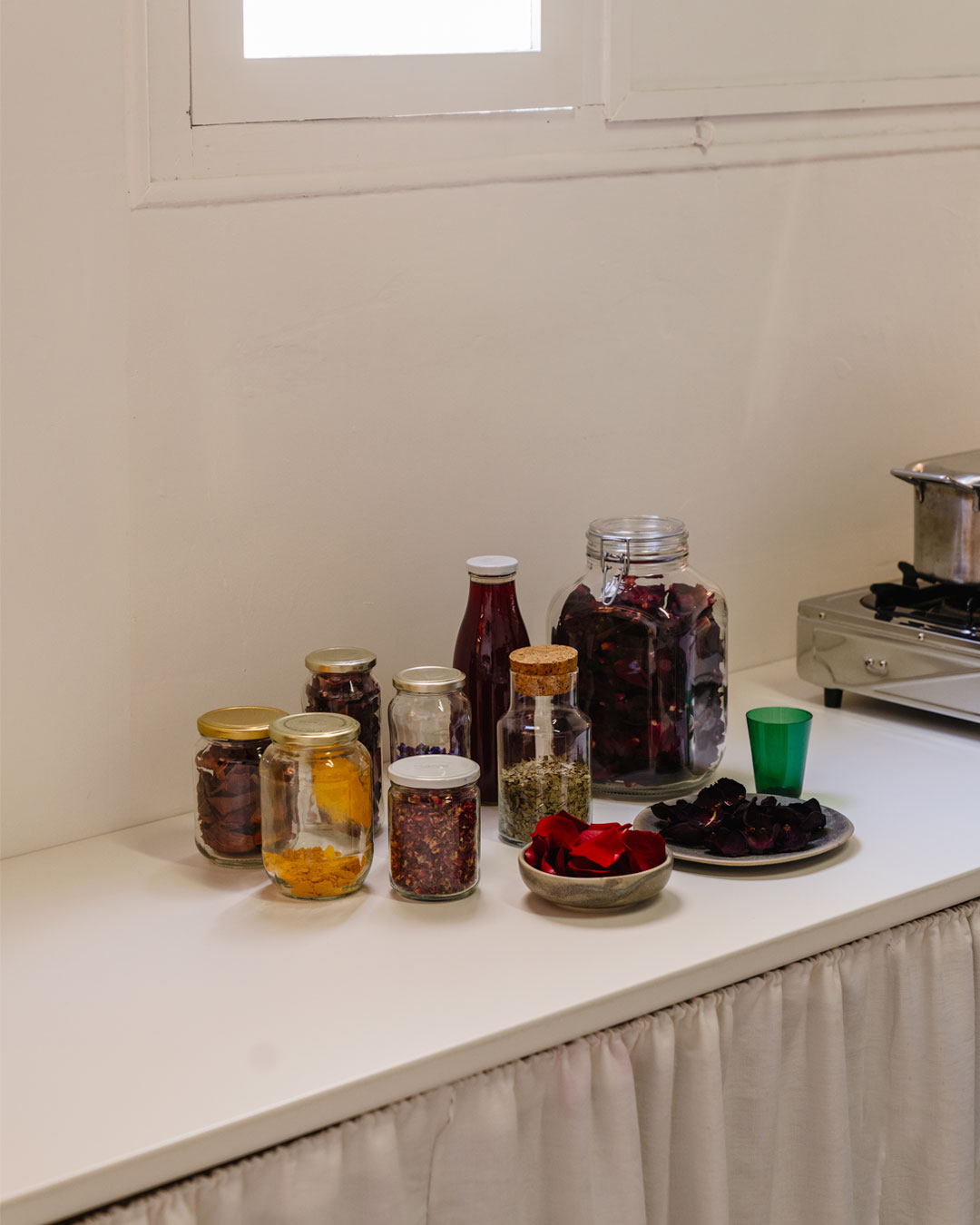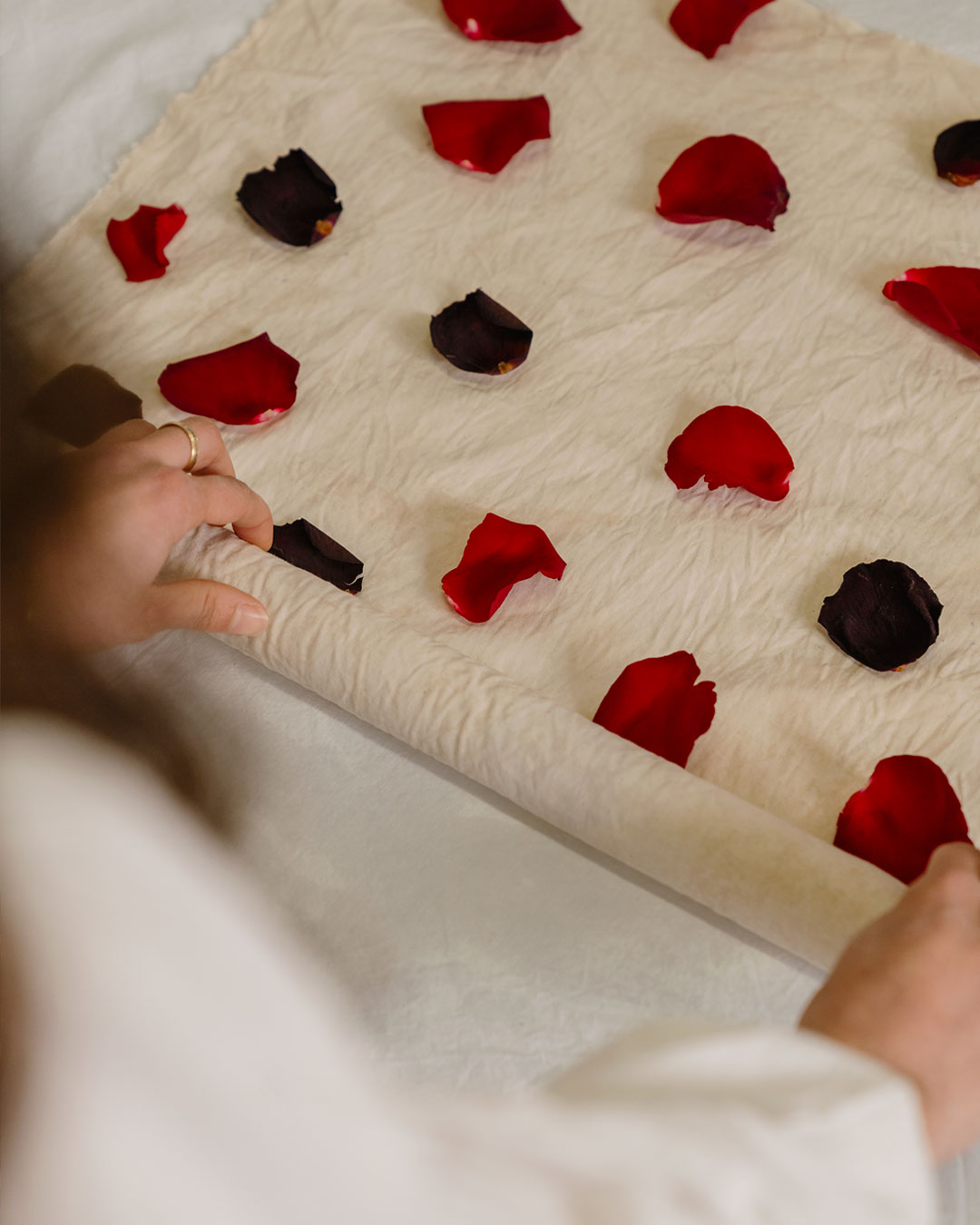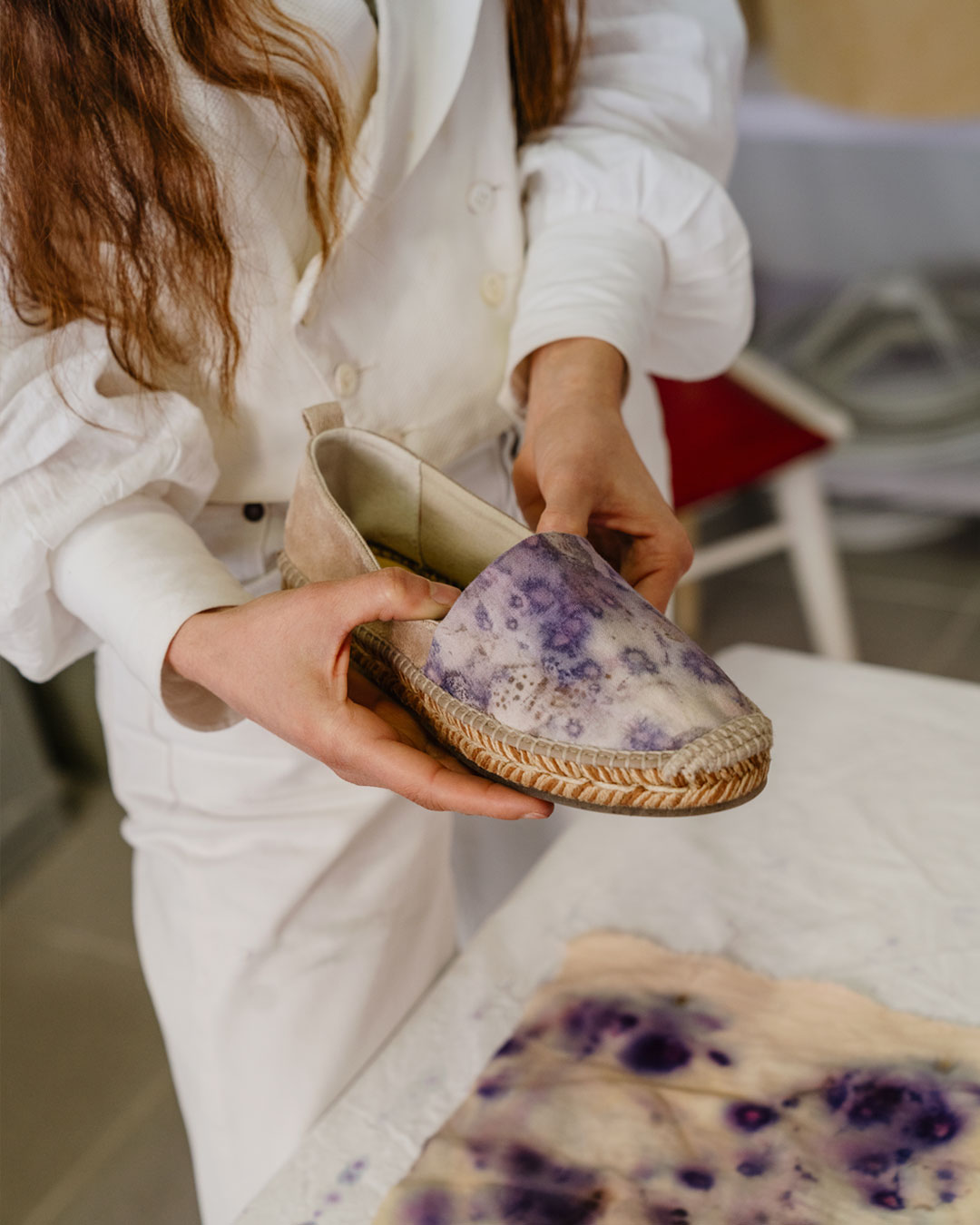We know you’re a young entrepreneur, but where did the idea of working with natural dyes come from?
It all started organically, I was born into a large family where, ever since I was little, I had to use my imagination to find ways around the lack of material goods; I enjoyed being in contact with nature and that’s where I found all I needed to play and create. I learnt my sewing skills from my mother, who taught me the beautiful art of patchwork, using scraps of fabric that had no other use to create blankets or garments. Later on, I started selling everything I could think of, such as crochet bags, fabric dolls, dried flower necklaces, pencil cases, wash bags, boxes, stones bound with cord, macramé necklaces, etc.

When I started studying Fine Art, I found out that it was all heavily focused on painting, sculpture, photography, drawing, etc. I learnt all those techniques that expanded my knowledge, but I didn’t feel at all fulfilled working with those kinds of arts. I was in an optional natural dye and fabric workshop when I discovered a new way of applying textiles to my projects, I was amazed that I could use plant and flower pigments and give them a second life. I started to perfect my technique with quantities, cooking times, different dyes and leaves, the pH of water, mordants, etc. During this time, I met Teresa, a woman from Barcelona who has been creating lampshades in her workshop in the Gracia neighbourhood all her life. I liked what she was doing so much that it gave me the idea of applying my ecoprint fabrics to lampshades and we made a deal: she taught me the business and I organised and tidied the whole workshop. I learnt quickly and was pleasantly surprised with the result because light penetrated the fabric, illuminating the leaves and colours, creating a very special and harmonious atmosphere. That was when Camale_on started to take shape.
When I finished university, I had the opportunity to work as a crew member on a sailing boat. For a year, we sailed to places I never would’ve imagined. I absorbed all those colours, lights, textures, forms… this experience also inspired me to continue with my Camale_on project.

How would you describe your creative process and what do you enjoy most?
During the creative process, there’s a lot to pay attention to, from the weight of the fabric, the material gathered, the preparation times for the colours, etc. With dye with natural pigments, fibres and textiles of vegetable or animal origin are used, avoiding any of synthetic origin. The way the colour fixes and its strength depend on this. To transform and design the fabrics, I use different tools:
Pots and pans with lids, used to extract the colour.
Stainless steel or wooden mixing utensils.
Sieve or cloth for filtering.
Weighing scales.
Mordants.
Natural fibres and textiles.
PH neutral soap.
Pigments, leaves and flowers.
Water and fire.

One of the most satisfying parts of natural dyeing is gathering pigments and discovering what colour is obtained from them. Every pigment can produce different hues of the same colour, and that also varies depending on the season and the material we’re using for dyeing. Pigments must be collected responsibly. Material can be gathered from roots, bark, leaves, seeds and fruits.
The first step of preparing the fibres or fabric for dying is washing. The purpose of this is to remove waxes, starches and chemical products that may be part of the production process and which prevent natural pigments fixing properly. Washing is also important to make sure the colour is consistent.
Using a mordant on the fabrics is the most important process that must be carried out to ensure the colour lasts. The word ‘mordant’ comes from the Latin mórdere, which means to bite, grab, grip; we use it to make the natural fibres able to hold the colour particles.
After these steps, I use the botanical printing technique. On the fabric, I create a detailed arrangement of the leaves and petals I’ve gathered or leftovers picked up from local florists, creating unique and unrepeatable designs for each piece. This technique, called ecoprint, is where natural pigment from the flower itself is transferred to the fabric using steam. A curious fact about these processes is that even when you’re using the same material, sometimes you get completely different results; that’s the magic of nature and it surprises me so much.

Flowers, plants, petals… what else can we use to print or make natural dyes? What materials do you use?
We’re used to seeing how our clothes can get stained by wine and coffee as well as cherries and strawberries; these can all be impossible to remove. This is because the vast majority of natural products have dye properties. When applied well with the right techniques, these products can create impressive colour palettes.
Personally, I really like to recycle materials that I always have available and give them a new use, such as onion skins, which create orange hues, or avocado stones for pinks.

Finally, Can you describe the process of making the print for our espadrilles? Are you happy with the result of the collaboration?
The process was very laborious, but satisfying too, I am used to working with small and made-to-measure pieces; for this collaboration I had to adapt quickly to the demands of a large company and focus my resources and energy on good management of the work processes.

I’m very grateful to have taken part in this collaboration with Gaimo, a company which has a vision of creating artisan products with local people, which cares for the present and future of the planet by improving their shoes using ecologically sustainable products, as well as placing their trust in young entrepreneurs for their projects.I’m very happy to be able to contribute my drop in the ocean to this beautiful TIERRA collection project.








